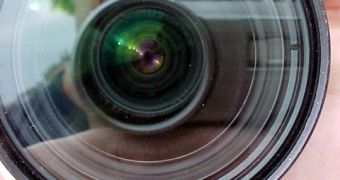Lenses are used to converge or diverge light in various optical and electronic devices and the first written records of the use of a lens date to Ancient Greece, in 424 BC. The optical zoom lenses in professional television cameras can have a magnification ratio as high as 100x.
There are some things that a single mirror was never able to do, which required a system called "adaptive optics," a technology to improve the performance of optical systems by reducing the effects of rapidly changing optical distortion.
It works by measuring the distortion and rapidly compensating for it either using deformable mirrors or material with variable refractive properties and it requires multiple lenses, which are also expensive.
Now, a team of researchers at the Sandia National Laboratories developed a new tool that can do the same job as the adaptive optics systems in laser beams, only far cheaper and without using multiple mirrors.
The new patented tool is a really low-tech adaptive optics system that can correct distortions by simply changing the pressure, which in turn modifies the convexity or concavity of a single reflecting surface.
"We can't compensate for small-scale aberrations," says principal investigator Jens Schwarz, "but certain large-scale beam distortions are correctable with this tool."
The effectiveness of this new method have already been proven on a the huge Z-Beamlet laser at Sandia, which is now able to fire every two hours instead of every four "because the device pre-corrects for distortions caused by heat", says Schwarz.
This recommends it for most laser applications, with an expected price of only a few thousand dollars and some companies have already expressed their interest in marketing this invention.
Schwarz said about the motivation of his work that "It's customary to use a static concave mirror - or a combination of appropriate lenses - and hope it's correcting well for distortions in the lensing system you have. But rather than buy a succession of lenses or mirrors, we thought: Let's see if we can do the job more simply and inexpensively by using only one mirror with a flexible focal length."

 14 DAY TRIAL //
14 DAY TRIAL //